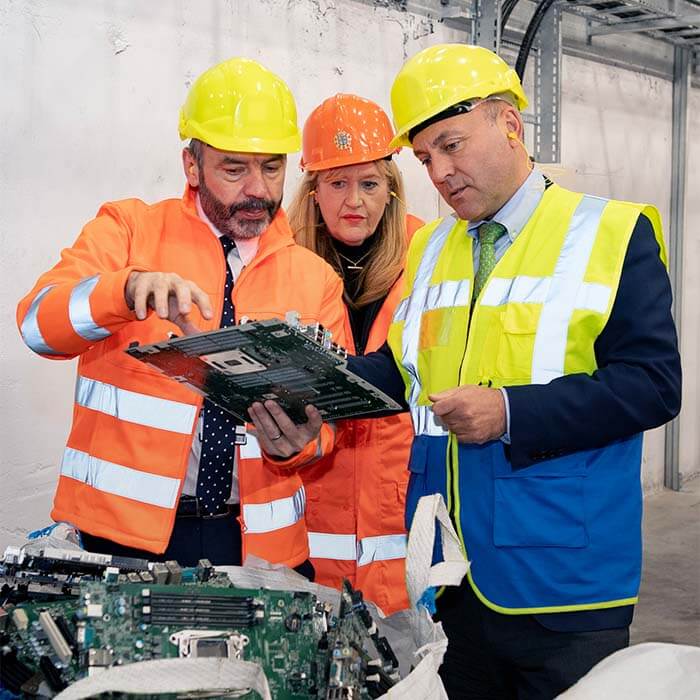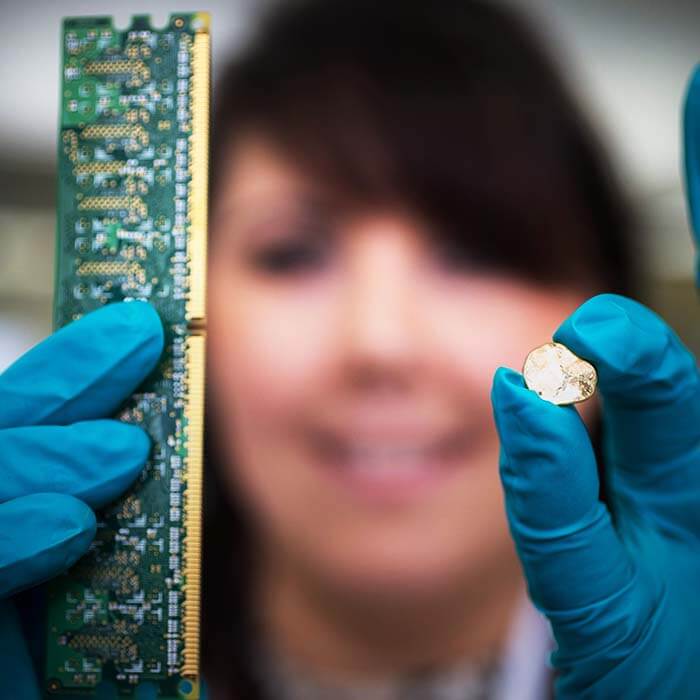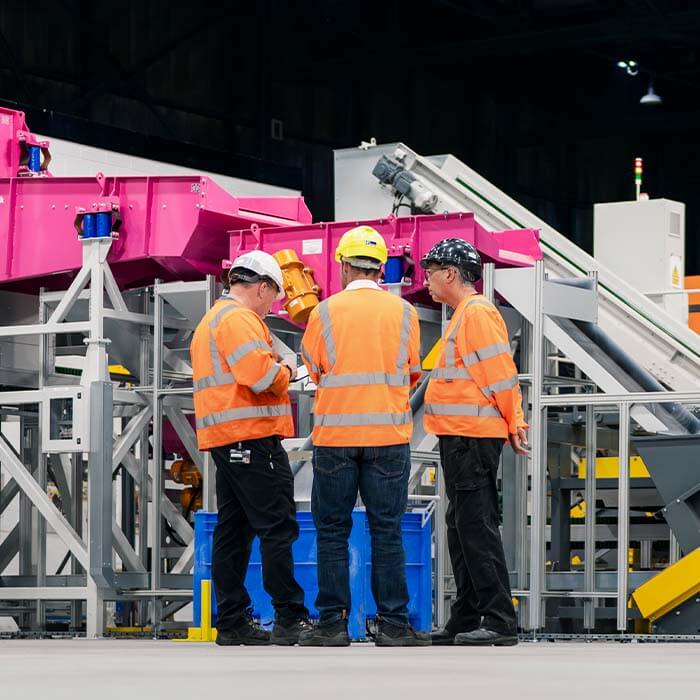Environmental Impacts of E-Waste
Our innovative solution to recycling printed circuit boards (PCB’s) from end-of-life electronics applies a circular approach to recovering and reusing precious metals.

What is E-Waste?
E-waste includes any end-of-life electronics and e-scrap, including discarded mobile phones and laptops. It is often summarised as anything with a battery or a plug.
- One of the largest and most complex waste streams in the world, with 50 million tonnes generated a year, expected to reach 120 million tonnes by 2050
- Its toxic nature can lead to irreversible health effects if it leaches into the environment
- The process of acquiring resources for electronic equipment and the subsequent production of said equipment has a significant impact on the environment. In order to maintain sustainable practices, these resources must be extracted and repurposed for future use at the end of the equipment’s life cycle.
A More Sustainable solution
Confronting the growing concern of one of the largest waste streams in the world
- We are leading the transition to recover precious metals at room temperature, rather than in high-temperature smelters
- Our plant has been developed from ground up to be clean and sustainable, meeting our stringent health and safety standards to operate safely for our staff and wider environment
- The plant processes the entire circuit board, recovering precious metals and creating renewable building materials
- The purpose-built plant provides new skills, technical capabilities and employment within the UK




